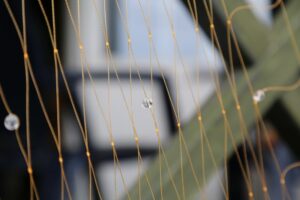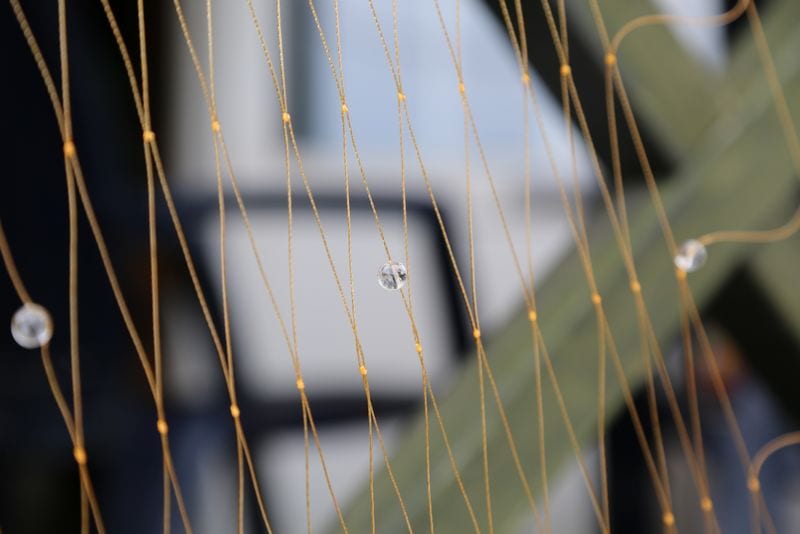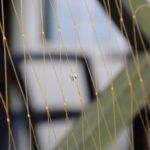Acoustic reflector
Sommaire
Acoustic relectors
Acoustic reflectors are considered as passive deterrents as they don’t emit sound into the marine environment, unlike pingers. These reflectors can be made of metallic materials, which are fixed in the middle of the net, between the bottom and float lines in order to increase the reflectivity of the net so that cetaceans using echolocation can better perceive it in the water.
Several materials can thus be used to be incorporated in the nets (barium sulphate, iron oxide, plastic, glass, various metals,…) but the difficulty is to keep the same capacity of entanglement of the net to catch the target species and to handle the nets on deck.
Ongoing tests

In France, the Licado project is currently testing acoustic reflectors on gillnets in the Bay of Biscay.
In Europe, similar tests are also being carried out with other types of materials such as acrylic beads attached to nets in the Baltic Sea. Designed to limit the capture of harbour porpoises in nets, these can be adapted for other cetacean species.
In the UK, a collaborative research project is developing another type of passive acoustic reflector (PAR), designed as a buoy attached to the float line to reflect the sounds emitted by echolocating cetaceans. These buoys have the same buoyancy as those used in unmodified nets and are therefore easy to use.
Next steps
The performance of nets using such devices still needs to be studied to ensure that they are similar to nets traditionally used by fishers.
In addition, tests need to be carried out to ensure the effectiveness of such devices in different sound environments and with different species of cetaceans.

This sheet is proposed in the framework of the Cetambicion project (https://www.cetambicion-project.eu/)
Crédit photo : Institut Thünen




